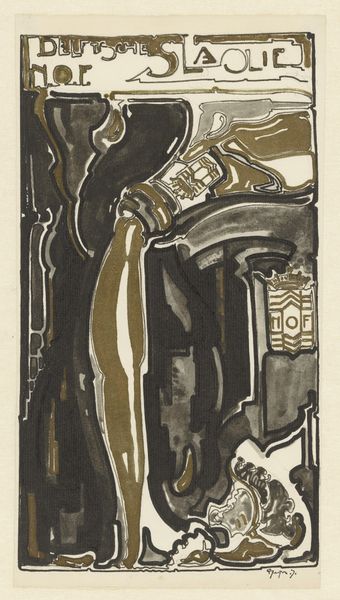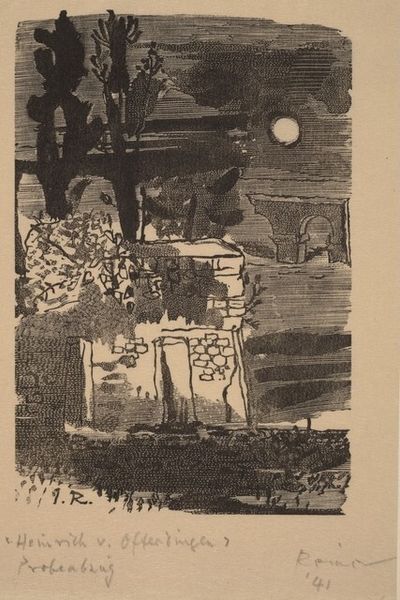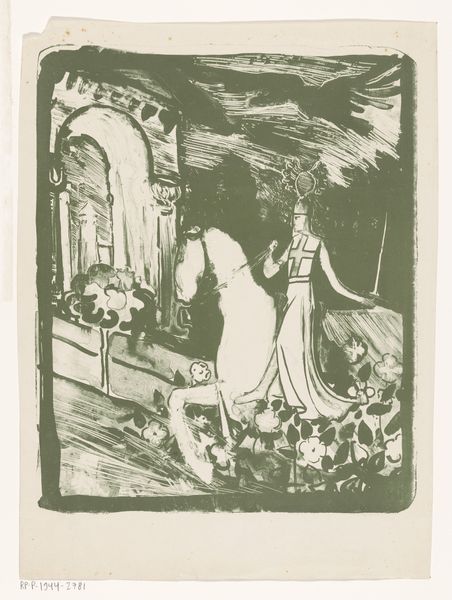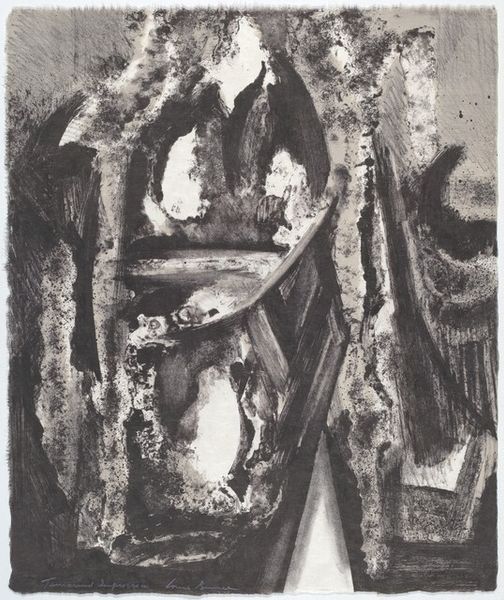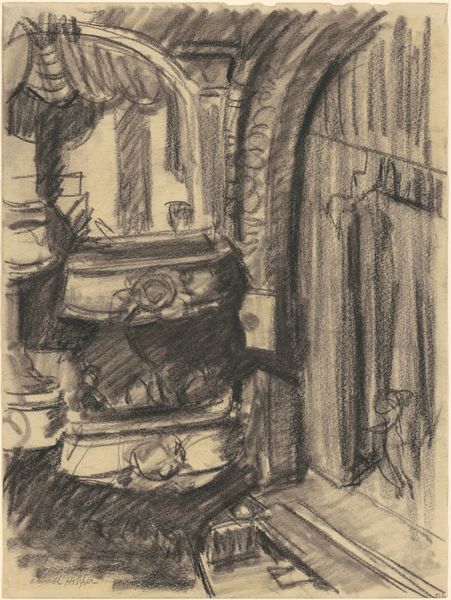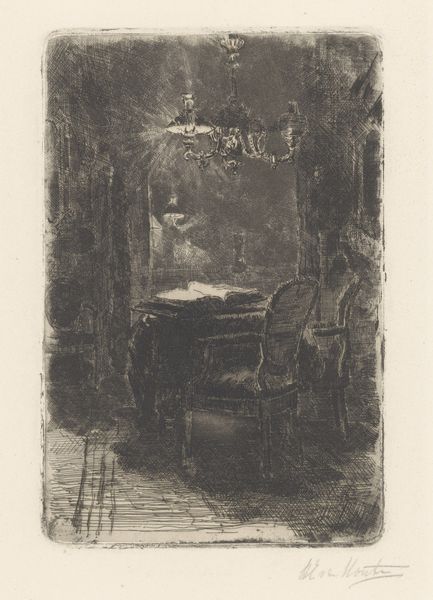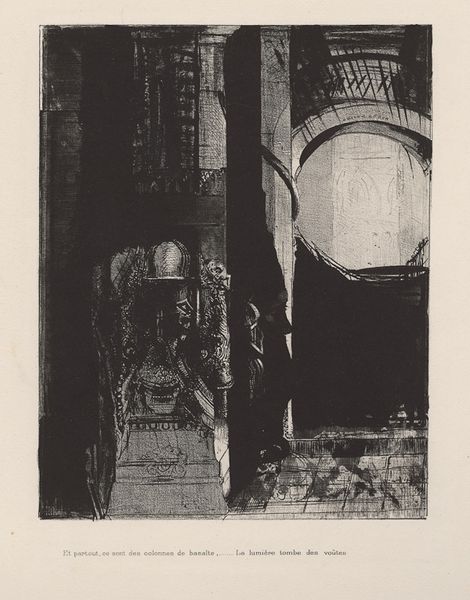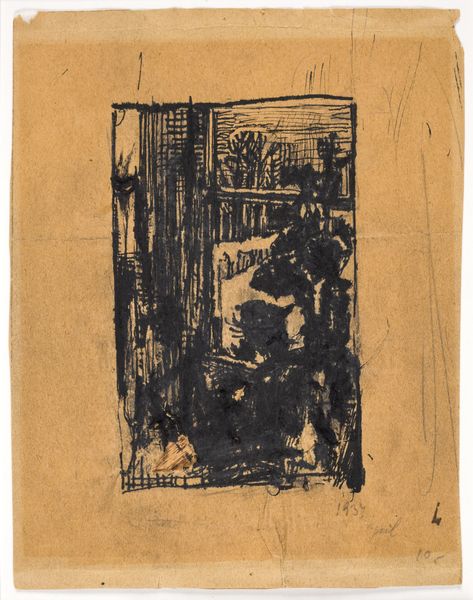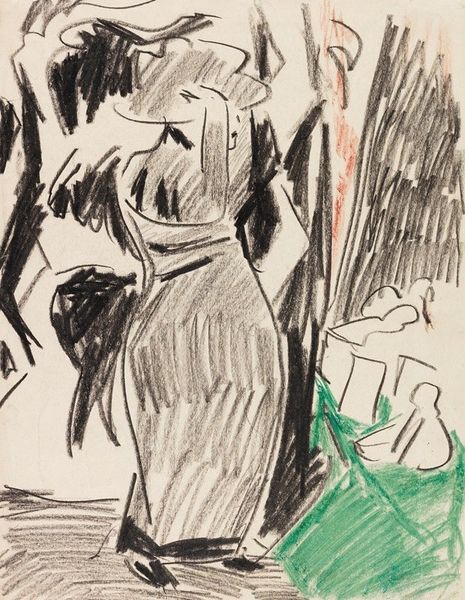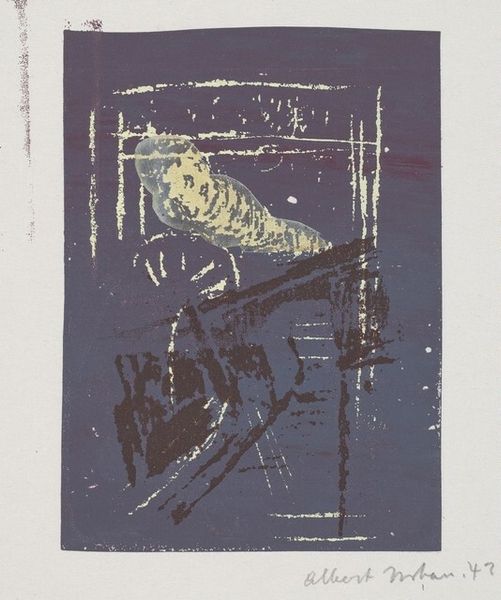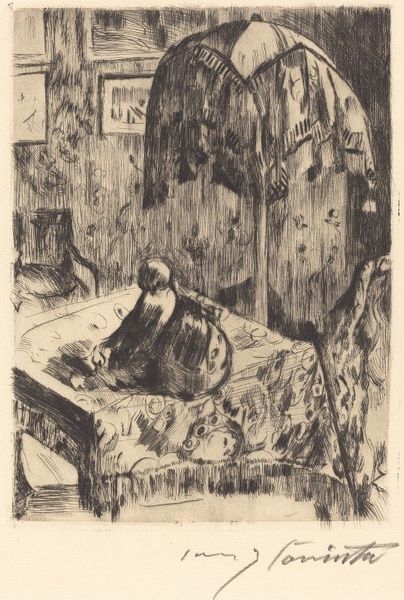
#
water colours
#
possibly oil pastel
#
handmade artwork painting
#
oil painting
#
fluid art
#
acrylic on canvas
#
underpainting
#
watercolour bleed
#
watercolour illustration
#
watercolor
Copyright: Public Domain: Artvee
Curator: This is Édouard Vuillard's "A Gallery at the Gymnasium," created around 1900. It’s quite evocative, isn’t it? Editor: It is! Immediately, I’m struck by the dimness. It’s almost claustrophobic, yet undeniably alluring with the play of shadows. Curator: The formal qualities certainly support that reading. Notice the muted palette, primarily greens and yellows, lending a sense of enclosure, even secrecy. The artist has really employed a reductive composition; the rendering almost impressionistic with flattened depth. Editor: Agreed. And it’s vital to consider the social dynamics. Gymnasiums in this era weren't merely places for physical exercise, especially for women, like here; they were symbolic arenas. Who attended these spaces? What class backgrounds did they represent? These sites fostered dialogues on health, femininity, and social progress. Curator: That adds a rich layer. I'm particularly drawn to the compositional strategy itself. Vuillard eschews conventional perspective; the tiers of spectators are flattened. It emphasizes the picture plane—its very artificiality. Editor: The visible brushstrokes and almost unfinished quality further distance us, pushing us to consider the scene as a constructed view—one steeped in the particular social and gender norms Vuillard observed. It feels to me a bit like a furtive glimpse, a world slightly hidden, slightly out of reach. Curator: Fascinating! The curtain or canopy above indeed enhances that theatrical quality. I’m especially intrigued by how he merges the architecture with the audience; it’s hard to disentangle them formally. Editor: Perhaps, this blurring hints at how social environments mold individual identity, right? It seems that these spaces shape collective behavior while imposing their structures. I keep thinking of women artists from this time period depicting private spaces as both zones of social confinement and intimate gatherings, mirroring how complicated women’s rights were. Curator: A beautiful interpretation. Ultimately, what is clear, the work shows the complex layers between space, experience, and how even a passing view may hold social and personal depth. Editor: Precisely. It invites us to think about the layered meanings embedded in environments, both personal and public, and the lens through which we observe these spaces.
Comments
No comments
Be the first to comment and join the conversation on the ultimate creative platform.
